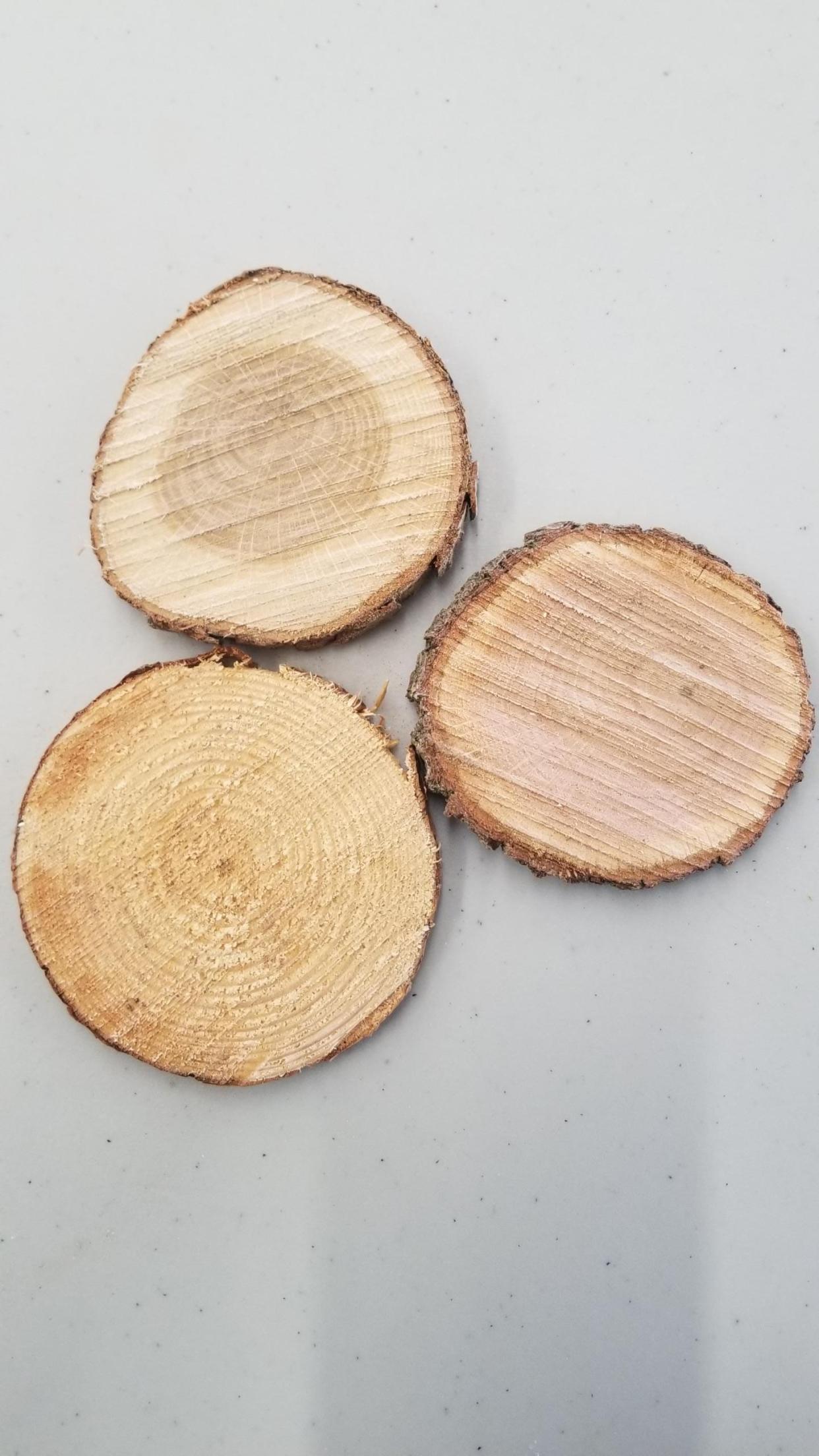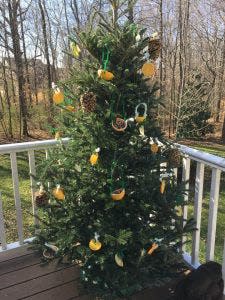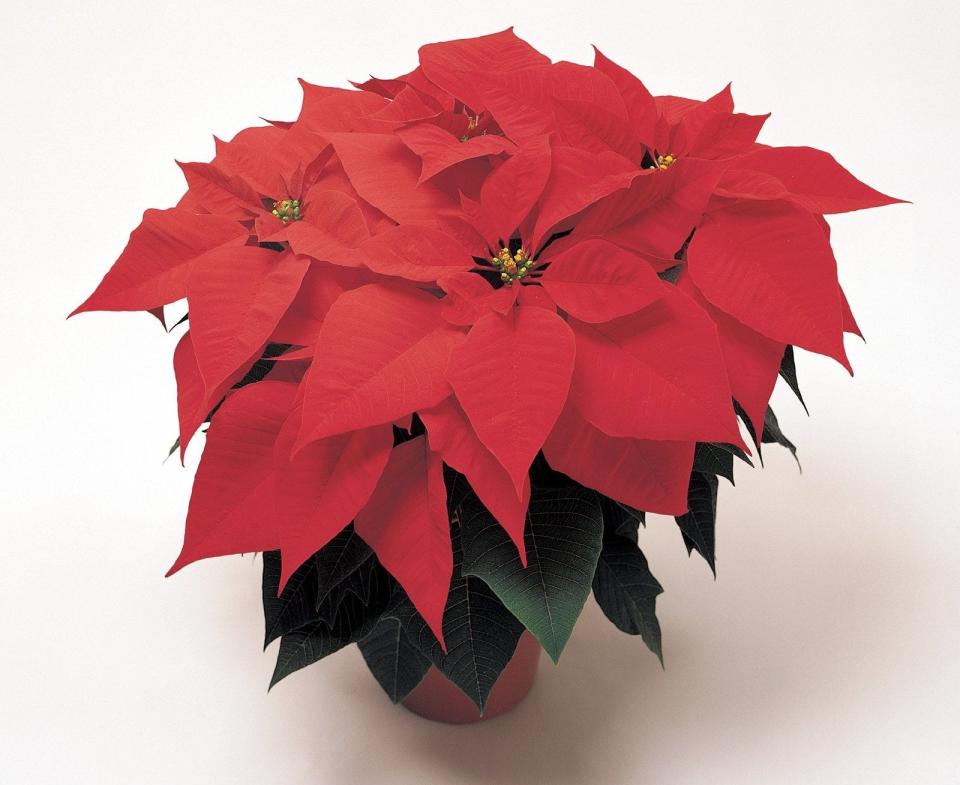How to reduce, reuse and recycle your Christmas decorations

Holiday decorating is hard work but the effort brings joy, color and light to what can sometimes be the darkest days of winter.
The cleanup of holiday decorations rarely brings joy but is a necessary task. Everyone maintains a different schedule for removing holiday decorations from their home. My neighbor’s cut Christmas tree is at the curb before 4 p.m. on Christmas Day each year but we typically wait until the Epiphany on Jan. 6 to begin removing our holiday decorations.
More: Gardening: Some popular Christmas plants are harmful to humans and pets
Whenever you decide to begin the task of removing your holiday decorations, think about the environmental impact of the season and look for ways to reduce that impact when disposing your decorations. From disposing of your live Christmas tree to tossing burned-out strings of lights, there are environmentally friendly options for disposal or reuse of nearly all holiday decorations.

How to recycle cut Christmas trees
Several options exist for recycling or reusing cut trees. Most central Ohio municipalities collect used Christmas trees with their regular yard waste and recycling pickup. Trees are chipped and the mulch is provided to gardeners or used in parks and other municipal facilities. Trees taller than 6 feet should be cut in half and should not be placed in recycling containers. Trees should not be in plastic bags and all decorations must be removed.
There are many other ways which cut Christmas trees can be recycled:
• Wildlife habitat: Used trees make excellent winter habitat for birds, wildlife and even beneficial insects. Simply place your used tree in the garden or yard and use it as a winter bird-feeding station and sanctuary. Suet, bird feeders and even strings of popcorn, cranberries or orange slices hung on the tree will attract birds and they will use the tree for shelter.
• Mulch: Use a sharp pair of pruners to cut the branches into small pieces that can be used as winter mulch on planting beds.

• Compost: Live trees can be added to compost piles when cut into small pieces. Depending on the size of your tree, the trunk will need to be sawed into smaller pieces and will take longer than the branches to decompose.
More: Gardening: Benefits of indoor plants include improved air quality and work efficiency
• Firewood: Chop up your tree and use it for fuel in your fireplace or fire pit. The branches and needles will dry out quickly but you should wait a couple of months before the trunk of the tree is dry enough to burn.
• Make wooden coasters: Use a handsaw to cut the lower portion of your Christmas tree trunk to make drink coasters or small trivets. Simply cut the trunk into ½-inch slices and then sand down the surfaces and stain and seal before using them.
• Fish habitat: If you have a pond or lake on your property, used Christmas trees make excellent wildlife habitat when placed beneath the water. Simply secure the tree with rope to two cement blocks before dropping the tree into the water. Some park districts with lakes will also collect trees from consumers for this purpose.
What to do with wreaths, roping and holly boughs
Wreaths made from live evergreens, holly boughs and pine roping can all be used as mulch or added to compost piles. Cut branches and boughs into smaller pieces and add to the compost pile or use as insulating mulch in planting beds. Be sure to unwind and remove the wire or string on pine roping before cutting it into smaller pieces.

Holiday plants: Can they be
Live plants such as poinsettia, Christmas cactus and amaryllis can be saved for blooming again next season — if you are willing to provide care for them for the next 11 months! After its flower drops, allow amaryllis plants to continue producing green leaves as this foliage will add energy reserves to the bulb for flowering next winter. Amaryllis plants will need of several months in a cool, dark area in order to bloom again next December.
To keep a poinsettia plant, simply continue providing water and lots of light through the winter and spring. Then prune the plant to approximately 6 or 8 inches in early summer. To bring out the full color of the plant next December, it will need 12 hours of complete darkness each night for two months.
Keep Christmas cacti in locations with filtered light and provide 12 hours of complete darkness each day for about six weeks before desired blooming next season.
Recycling string lights
Several local communities are sponsoring recycling programs for broken Christmas light sets. Bexley residents, for example, can drop off light sets (untangling is not necessary!) at the city pool on Clifton Avenue before Jan. 5. Lights can be placed in the city truck parked in the lot at any time.
Residents of Westerville can exchange their broken light sets for free LED light bulbs by visiting the Westerville Electric Division, 139 E. Broadway, from 8 a.m. to 4 p.m. Monday through Friday.
By recycling and repurposing live holiday plants and plant materials, as well as other holiday decorations, we can reduce the carbon footprint and environmental impact of the holiday season.
This article originally appeared on The Columbus Dispatch: Don't throw out Christmas stuff: How to reuse and recycle trees, lights

